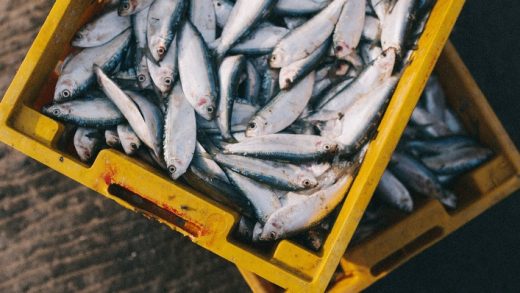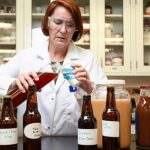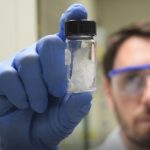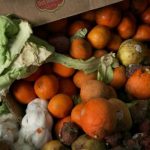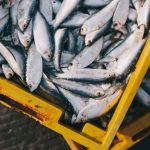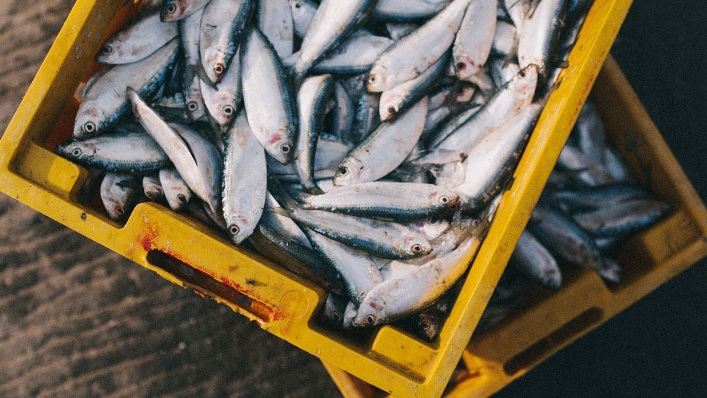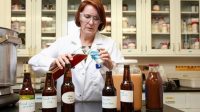This Startup Turns Climate Pollution Into Fish Feed
Off the coast of Senegal, where large Chinese ships now catch as much fish in a week as Senegalese fishing boats can catch in a year, the population of mackerel and sardines is dwindling. In Peru, home to the world’s largest fishery of a small fish called anchoveta–once fished with no restrictions–the government has spent the last several years retraining 2,000 fishermen in new jobs to help curb overfishing. In the U.S., the West Coast sardine fishery was closed in 2017 for the third year in a row because of a crash in sardines.
Each fishery provides at least a portion of its catch to be made into fishmeal, small pellets of protein and nutrients that are used as food for livestock and fish farms. If demand for seafood for humans is growing quickly, so is demand for fish fed to other fish. Aquaculture production has more than doubled since 2000. Recognizing that the ocean can’t keep up, one startup is working on making fish feed from another source: carbon dioxide.
“We can take untreated flue gas from various industrial emissions . . . and just pipe it into our plant, rather than putting it in the atmosphere,” says David Tze, CEO of NovoNutrients, which is currently scaling up a system that it has proven works in a lab.
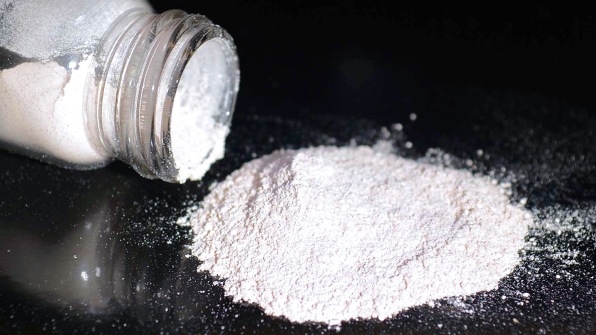
The startup’s process uses carbon dioxide, along with other emissions, to feed microbes that can then become protein for companies that make pellets of food for fish. Those microbes are similar to ones that evolved to live near gas vents in the ocean; the startup arranges them with other species into “microbial factories” that work together to make the whole process more efficient.
The company is also developing new microbes, using synthetic biology, that can produce particular nutrients–vitamins or probiotics, for example–that can also be used as ingredients in feed. All of this will happen in pipes that help the gases dissolve in water, rather than in the large tanks that are used for fermentation in a brewery or some pharmaceutical companies. The pipes can connect directly to a cement plant or other industrial emitter and then into a fishmeal factory next door. Hydrogen, which can be produced through electrolysis of water using solar power, can provide energy for the system.
For NovoNutrients, it’s a way to turn a waste product and a major greenhouse gas into something of value. “About 36 billion tons [of CO2] a year are emitted globally, and we are not aware of other economically feasible large-scale carbon utilization practices,” says Tze. “We’re sure others will emerge over time, but we think it will be interesting to be in that first batch to be commercialized.”
Because carbon dioxide emissions are often free, and some companies will even pay to have the gas captured, the process is also cheaper than catching fish to turn into fishmeal. The demand from aquaculture has made fishmeal valuable, and producing nutrients through the process is even more valuable; protein meal might sell for around $1,000 a ton, but nutrients like probiotics can sell for $1,000,000 a ton.
The same process could be used to make feed for livestock, and eventually, pet food or protein for synthetic meat for humans. The urgent need in the aquaculture industry made it a logical place to start. “The timing is really about the trajectory of demand from the nascent meat substitute and synthetic meat food tech companies,” says Tze. “How soon they are willing to look for higher-quality and/or lower-cost alternatives to pea protein, etc? We understand that our early markets, aquaculture, poultry, and swine are ready now.” (The startup, originally called Oakbio, initially focused on biofuels and bioplastics, but pivoted to make ingredients for feed when oil prices collapsed.)
Other startups are also trying to create substitutes for fishmeal in a variety of ways. Some are raising insects to process into protein meal and oil. Others that originally developed algae for biofuels are shifting to use algal oil for animal feed. While some companies currently use soybeans and grains to substitute for the protein in fishmeal, multiple companies like NovoNutrients are using bioreactors to create protein that more closely matches the mix of amino acids that fish would get by eating smaller fish.
“We are confident that the need and potential profits are so great, that there will be many profitable firms supplying the aquaculture feed mill companies,” says Kevin Fitzsimmons, an expert in aquaculture and a professor at the University of Arizona. Fitzsimmons is also part of a team called Future of Fish Feed, which held a challenge for teams to create alternative ingredients for fish feed, and is now hosting a similar challenge for fish oil.
NovoNutrients’ approach doubles as a way to reduce emissions. A typical cement plant might emit a million tons of carbon dioxide in a year; the startup can convert that into half a million tons of protein meal. There’s a demand for hundreds of millions of tons of fishmeal each year. Still, that’s only part of a solution for current emissions.
“Unfortunately, 36 billion tons of emissions of CO2 a year is a lot, and it’s going to require more than just addressing the protein needs of animal feed to solve that,” Tze says. “We hope to be a small but important part of the solution, but we certainly would not claim to be even a plurality of the solution.”
Fast Company , Read Full Story
(38)

